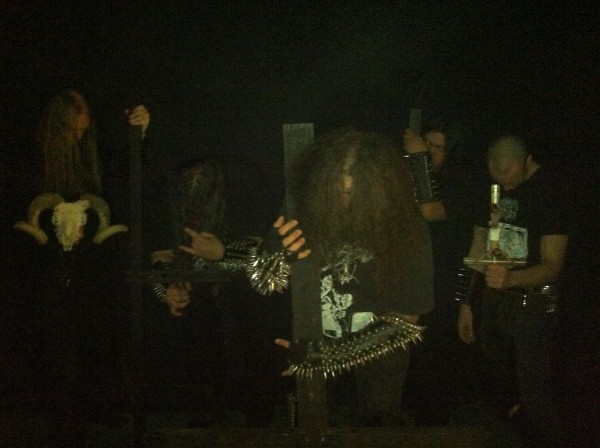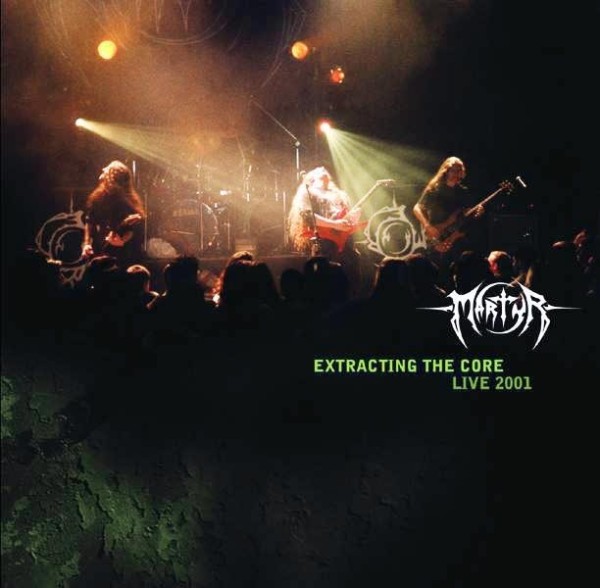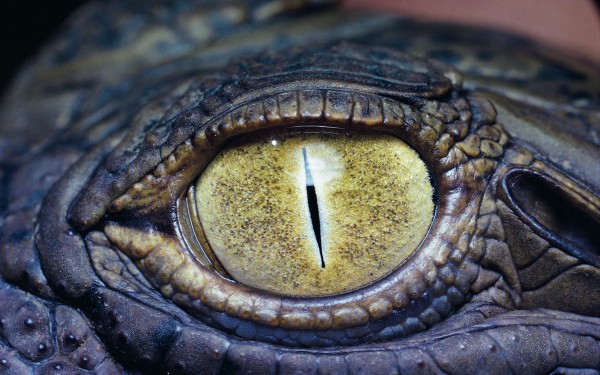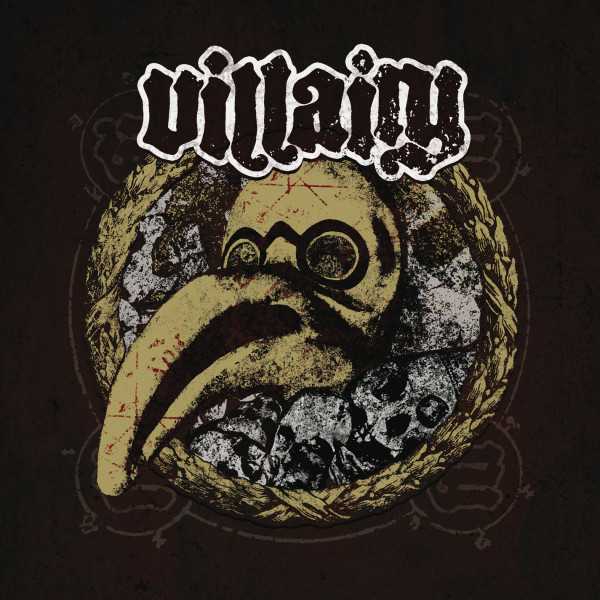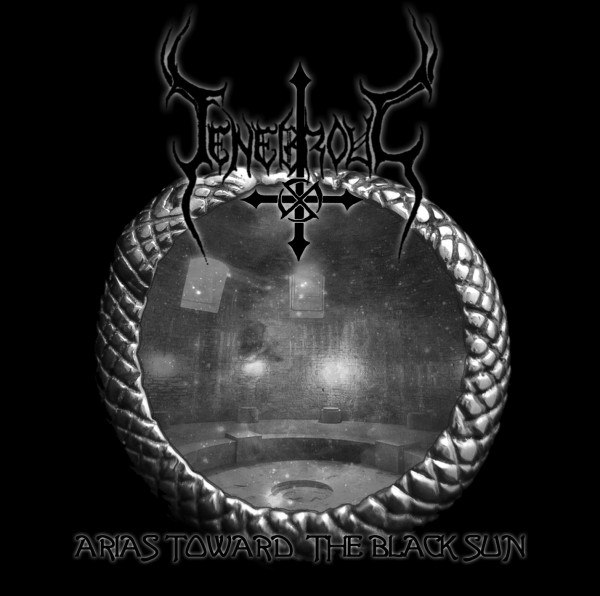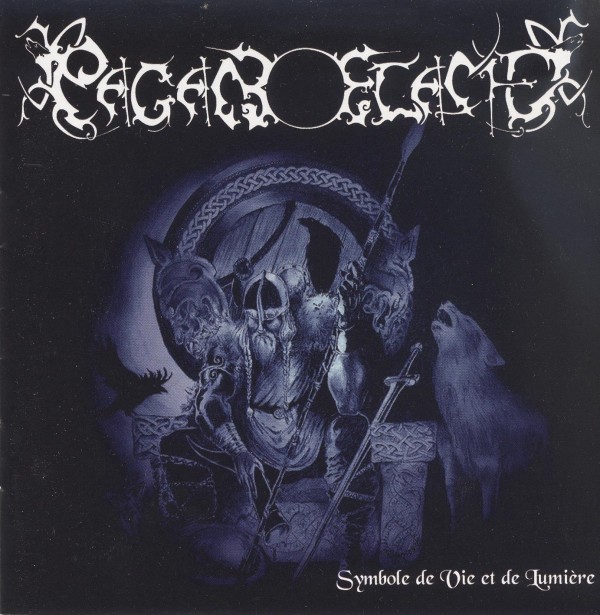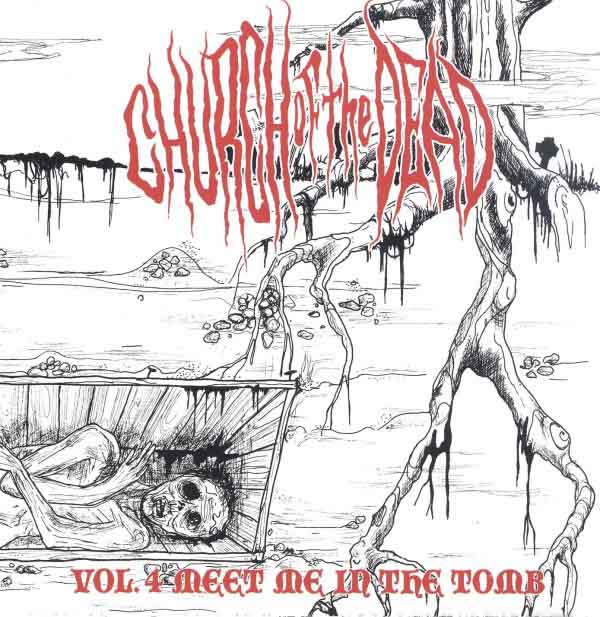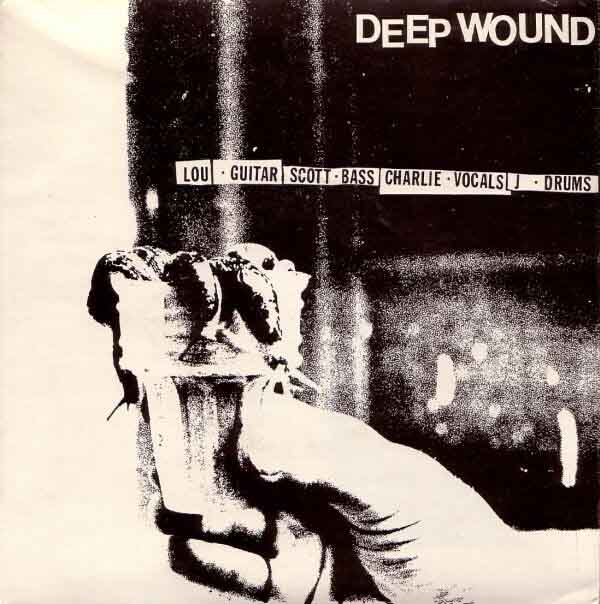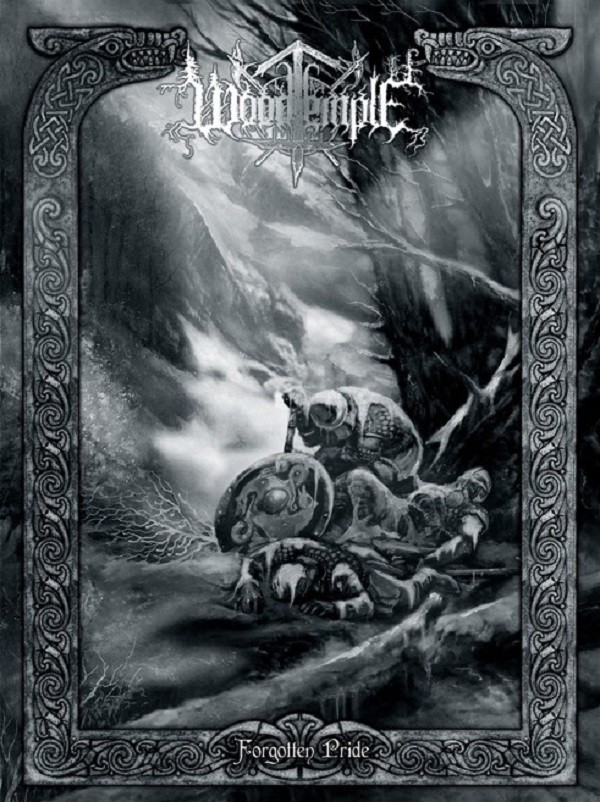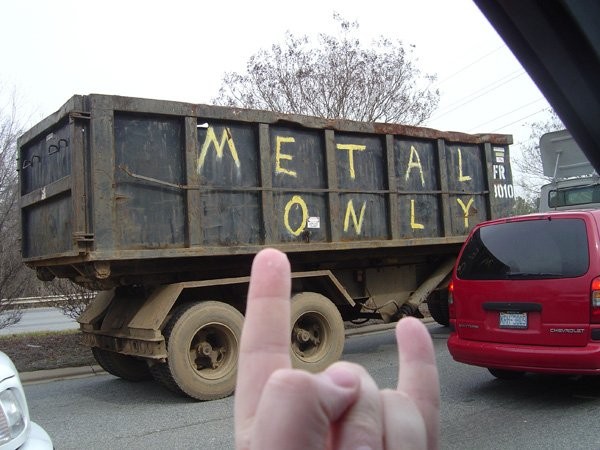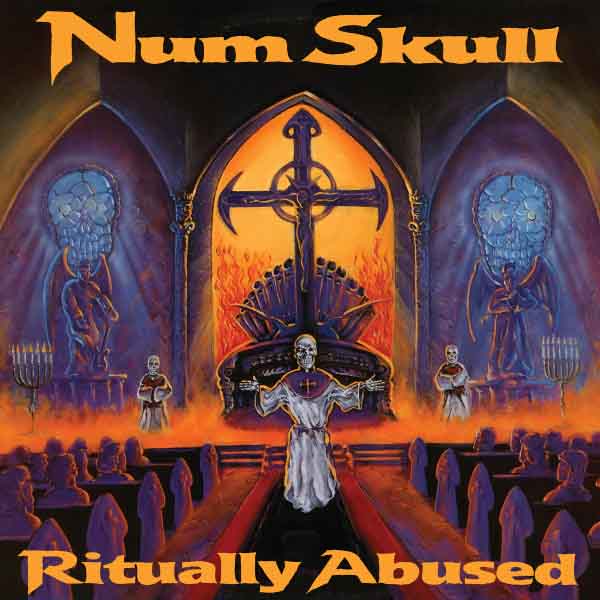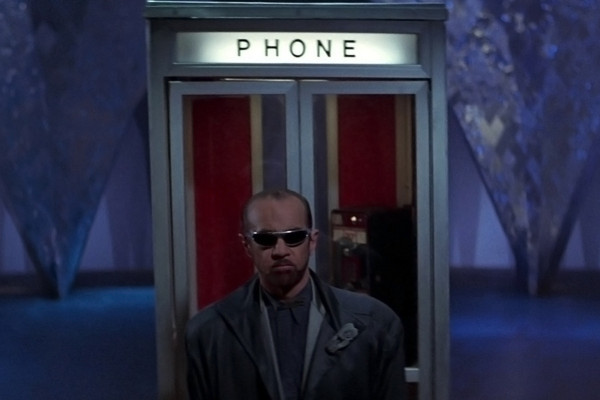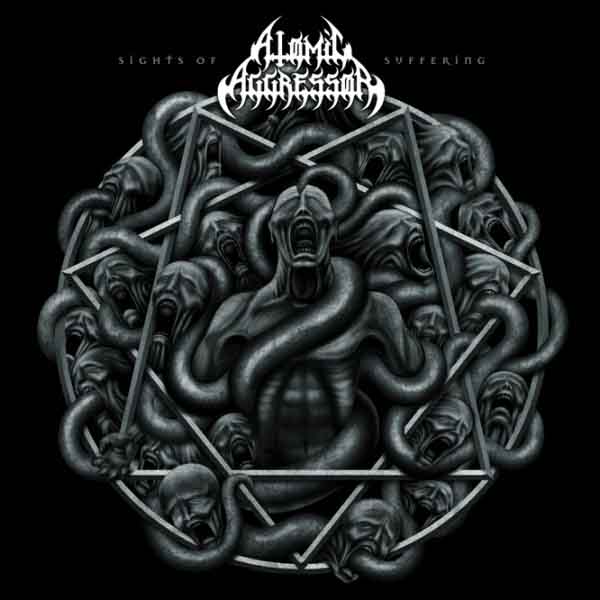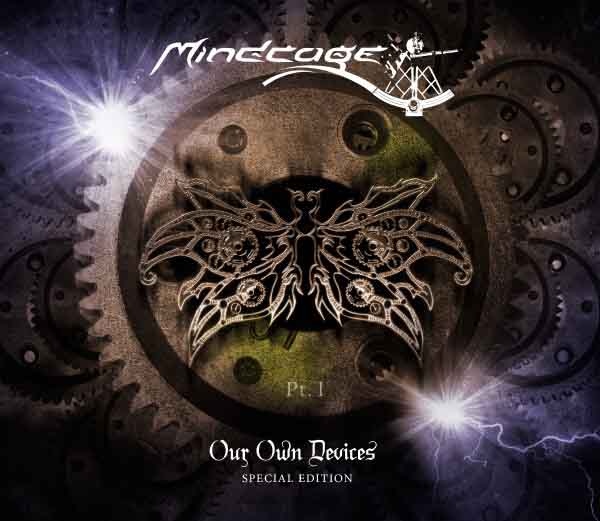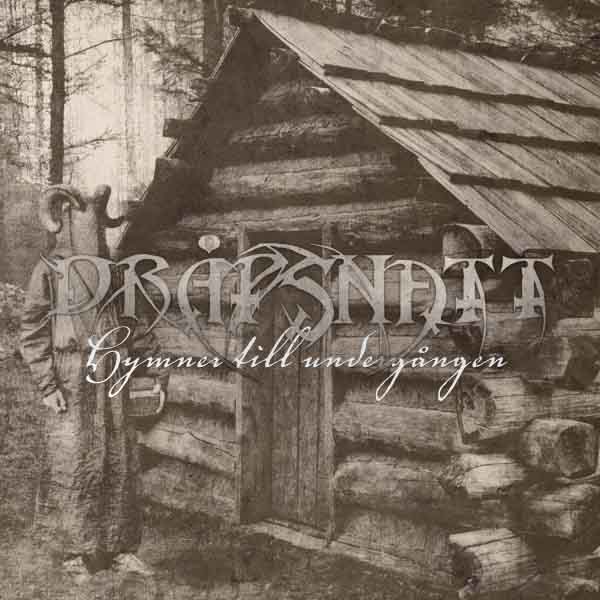Texas subterranean death metal band Blaspherian recently announced the planned release of a new album in 2015, tentatively titled Reborn through the Black Flames of Lucifer. According to songwriter/guitarist Wes Weaver, the band has already written four tracks for the new release.
(more…)
Martyr – Extracting the Core: Live 2001
Coming from the French-Canadian progressive metal powerhouse that later loaned members to Gorguts, Extracting the Core shows us Martyr playing a live set of their classic works. Before you wince: this is one of the better-produced live albums available such that it is indiscernible from a good but not excellent studio job; all instruments are clear and mixed in a way that fits expectations of studio recordings, and crowd noise is minimal. As a live album, it preserves everything you might want to hear from a band on record or live with a bit of extra energy in the vocals as musicians trying to cram ten thousand notes into six-minute songs howl at the audience with a high rate of exertion. The real question regards the style of this musically-erudite band, which brings up the question of poetry versus burritos.
A burrito, as you may know, is one of nature’s most perfect foods. A wrap of flour and lard encloses ingredients ranging from guacamole, pico de gallo, and carne asada to Spanish rice, sour cream and refried beans, and the whole thing is then consumed with the aid of delicious picante and verde sauces. What makes a burrito excellent is that instead of choosing what to have for dinner, you have everything, but in a form more convenient even than a sandwich. One cannot praise this Mexican-Spanish-Texican-Californian dish enough. But when composing metal, it becomes a brutal force. As Socrates tells us, all events have causes. What is the cause of a song? One either intends it to tell a story, or assembles a few musical theories into contrasting elements and makes a burrito of it. As with the burrito, uniqueness is lost in favor of a kind of sameness of differentness, where each song has everything and the kitchen sink, but over time — much like the constant pounding brutality of early Napalm Death or later Suffocation-inspired bands — it all starts to become the same, different variants of essentially an identical idea. With a poem, the form of the song and techniques used reflect the content; with a burrito, the content of the song reflects the need to include many different things in the form. You can analogize to variety shows, pluralism, unitarianism, and even Christianity itself — a compilation of a dozen religions, mostly Greek, Hindu, Jewish, Nordic, Babylonian and Egyptian — if you feel the need. But the point is that while the burrito pleases everyone, it does not achieve the distinctive expression that makes a song evocative of experience, thought or perception, which is what makes a poem or song stand out. It feels like something you have encountered, or something you wish to, and more than creating a solid impression it creates a space of balanced parts ambiguity and clarity, which makes you want to launch into it and battle for the beautiful to win out over the mundane, boring, pointless, directionless and entropic. In a burrito, this space does not exist because it is being used to hold all those delicious ingredients together.
Extracting the Core overflows with delicious ingredients. Head shredder Daniel Mongrain may be one of the most interesting guitarists in popular music. His jazz-influenced leads — this means dialing back the simplicity of rock music and accepting more complex harmony and corresponding technique — both display impressive technique and the ability to write a melodic solo with multiple emotions. All instruments show great proficiency, from the adept technical drumming that avoids overshadowing other instruments, to a subtle but present bass and complex riffing with difficult time signatures all nailed perfectly. The problem is the means by which this band composes: requiring a burrito means that a band must default to, at the core of each song, the simplest possible construction which can include all of its elements. When the randomness is removed, what remains is a simple speed metal song, with Meshuggah-style abrupt off-beat (as opposed to cadenced, like Metallica) speed metal riffing that alternates with hard rock and thinly-disguised jazz fusion riffs.
Essentially, this album is Pantera after music graduate school, much as Meshuggah simplified Suffocation and Exhorder and then amplified the degree of texture at oddball timings to produce their overrated material. While it is mournful to admit this, it kills the album and makes the listening experience one of tuning out the over-dramatic and busy riffing to get to the solos. In addition, in order to support the burrito, Martyr adopt many different voices of composition, from Supuration-style alternative-progressive metal to nearly hardcore, and the result injects further randomness. It would be better, as Gorguts did, to give this band a song template varied enough to tempt them but purposeful enough to channel these energies toward more musical profundity through instantial contrast in a prolonged and developing narrative.
5 CommentsTags: galy records, jazz metal, martyr, progressive metal
Sadistic Metal Reviews 01-06-14
The music fan possesses limited resources to achieve the goal of an enjoyable listening experience: time, money and energy. Reviewers tend to write about how cool everything is, but they should be writing about how mediocre most albums are so they can focus on the few that can be enjoyed for the next few years at least. It is hard to be cruel, but it is kinder than kindness. With that I introduce our latest round of Sadistic Metal Reviews…
Villainy – Villainy I
This enjoyable little romp reminds the death metal listener of later Sentenced crossed with the Venom-worship of Nifelheim and other bands who, in the old school days, were simply referred to as Venom tributes. Heavy metal genre riffing, combining the best tropes of the late 1970s and early 1980s, meets a harsh Cronos-styled vocal and updated technique. Nothing sloppy here; the band are tight and the arrangements show no spurious detail. However, despite the somewhat harsh vocals, like Venom this is NWOBHM and 1970s heavy metal revivalism without any particular relevance beyond that era. It skips speed metal textures for a death/black metal styled fast strum and continuous drumming as if taking notes from Merciless, and injects melody, but mostly stays within verse-chorus with introductory and transitional riffs different. The riff forms will be familiar to fans of heavy metal from that era. Lead guitar strikes a pentatonic blitz that is both enjoyable and very much within form. Unlike Merciless however this album focuses on writing hard rocking tunes and does not develop an evolving mood or atmosphere beneath.
Tenebrous – Arias Toward the Black Sun
Underground metal needs a new trope for a certain type of composition which appears frequently among our ranks. I dub this “80s situational comedy” after the movies where a character makes a bad decision, then to hide it chooses another bad option, then deceives and conceals in a string of events leading to absurdity and eventual plot collapse. Sitcom metal occurs when a band finds a riff they like and write other riffs to fit that riff without having an awareness of what the riff communicates emotionally to the listener, thus what the song is actually about, and so you end up with a cool riff and reactions to that riff which are designed to put it into context but ultimately have the opposite effect. Tenebrous fits this pattern through its work in a style that combines a whole lot of Graveland with some of the more aggressive strains of black metal. They have mastered the basic flowing riff, but not building a song around it, only building a song commenting on it. This is underscored by the cover of “Unpunished Herd” which ends the album and makes the rest of it look incoherent in contrast.
Pagan Flames – Symbol de Vie et Lumiere
This atmospheric black metal band combines Burzum-styled lead folk melodies over sweeping guitar riffs. Its strength is its melodic composition; its weaknesses are its vocals, which focus on rhythms that are too obvious and thus trite, and its tendency to try to work slamming full-stop and bounce rhythms into what should be a more continuous architecture. Barring those two disadvantages, Symbol de Vie et Lumiere presents black metal that unlike most recent efforts tries for the ancient, melancholic and epic warlike sound that made this genre popular before idiots invaded with thinly-disguised rock music to keep the mouth-breathers occupied. Many of these songs verge on being folk music itself and like the Darkthrone sidepoject Storm, feature trudging rhythms over which pagan lyrics are chanted to volkisch-reminiscent melodies. The fractured aesthetic presented by the overly busy vocals and tendency toward self-interruption with choppier rhythms narrowly keeps this album from being top tier but it distinguishes itself on its essence — attempting to write actual music through melody — from the formless legions of tryhards, shoegazers and hard rockers trying to use black metal as a vehicle for their own failed prior attempts at other genres.
Skrømt – Sjelebrann
Not since Disharmonic Orchestra Not to be Undimensional Conscious has a hybrid of this variety yet which retained its ability to express itself been cast among the metal minions. Skrømt combine alternative metal, post-metal, rough punk and older black metal influences (Ancient, Enslaved) into a form which keeps the catchy songwriting of indie rock bands but fleshes it out with a rich backdrop of shifting harmonic texture and, like metal, combines multiple riffs into chains to create a moveable part of a narrative. For the most part, songs stick to verse-chorus as augmented by background material and sometimes with a second instrumental chorus to expand upon the first loop. Like alternative metal, songs guide themselves through the vocals and the presentation of lyrics in a combination of shouted, sung and harsh vocals. Where this goes wrong is that rock and metal do not mix on an aesthetic and thus artistic level, and so the end result is rock gilded with metal riffs which are quickly absorbed, and some of the best work of this album exists in the shadow of the alternative rock tropes that it stands far superior to. This is unfortunate as clearly many good ideas and musical insights went into this album. Most inspiring in this release is the technical work applied to making the various riffs and styles fit together. It is rare for a band to understand how to connect different emotions together without following a blatant formula, but Skrømt stitches together multiple moods and styles into a coherent whole on a musical level, even if making it work on an aesthetic level seems difficult.
Church of the Dead – Vol. 4 – Meet Me in the Tomb
The term “cultural appropriation” seems trendy these days but few realize what it means. Blatant theft of the cultural methods of another group is too easily detected, so people appropriate those cultural methods by translating them into a form that most will not recognize. In this case, while Church of the Dead clearly uses death metal riffs and death metal vocals, its vocal rhythms are influenced by rap and its riff rhythms are closer to Motown than standard issue death metal. Thus while this disc shows some musical promise, it remains a confused aberration that wants to be in one genre but keeps itself in another, losing the spirit and atmosphere of that genre. Each piece tends to feature both Cannibal Corpse style trope cadence rhythm vocals and sing-song jingle-style vocals, making these hard to listen to without a wincing cringe, but also internalizes groove to the point where riffs take a basis in Morbid Angel and Malevolent Creation and become closer to Pantera. As a result, despite the many positives for this album, the overall negative is that its overall presentation is bouncy, poppy, and very much “rock” and not metal in form.
Deep Wound – Deep Wound EP
At some level all hardcore punk approximates the same thing because the genre solidified certain tropes and combined with the mathematical limitations on complexity, these defined the variety of punk songs. Deep Wound creates songs that sound either like Black Flag without the dissonance, or early Corrosion of Conformity without so many pauses. The vocals strikes a jaunty and sarcastic pause when they are not in full blur mode. As far as thrash goes, this is closer to the punk side like the first DRI LP, and its riffs are less metal than hardcore in minor key, but it beats the recent “crossover thrash” rebranding that verges too much on speed metal territory and becomes either tame or inanely jingle-y as a result. The hardcore spirit lives faithfully in this music but because of the vast similarity of hardcore, it also does not stand out in any particular way — riffs are not radically different, nor song forms, nor even vocals — so qualifies as a fun listen but not as definitive as the albums from DRI, Cryptic Slaughter and COC that defined thrash as a genre. However, this stands head and shoulders above the “party thrash” of recent years and by coming at the genre from the hardcore side, brings in an energetic simplicity that metal riffs make too complex to self-sustain.
###
Nidsang – Into the World of Dissolving Flames
- Basic black metal combined with Angelcorpse-style aggression, but leaning on the latter for songwriting. As a result, not much atmosphere but plentiful aggression. Melodic riffing adds some depth but consistent song form and intensity rob this album of much enduring power.
Aborted – The Necrotic Manifesto
- Aborted took their high-intensity low-complexity grind and gave it the modern metal (a/k/a deathcore) treatment which made it more chaotic. The more elements you add, the more internal complexity (melody, structure, theme) you must have or you reduce your core complexity to nothing, which is what happens here. Catchy chorus + two grinding riffs + hard rock influences.
Abysmal Dawn – Obsolescence
- Workable death metal with heavy metal influences in abundant lead soloing, melodic riffing and catchy choruses. Very paint-by-numbers however with not much of an intent to put anything into a song but energy and internal cohesion. Good riffs give it strength but do not make it compelling; modern-metal-style chanted choruses ahead of the riff also increase frustration.
Cemetery Fog – Towards the Gates
- This attempt at Paradise Lost-styled doom metal is both well-composed and artistically relevant, but highly cheesy from the use of melodies that directly gratify pop instincts to the occasional female vocals which aesthetically create the type of cheese that Motley Crue could only dream of. Songs are well-written and express a unique form and content for each, even though they drone on through a series of heavy metal riffs slowed down and are united by a melodic lead shadowed by vocals. While not bad, this makes the album as a whole somewhat sentimental in the sort of obvious Thomas Kinkade calendar way that drives away people like me, but it would be remiss to not notice the quality of songwriting here.
Abigor – Leytmotif Lucifer
- Black metal needs to stay black metal. Abigor try to work in late Gorgoroth through early Deathspell Omega influences and it makes their already spotty music more spotty. Some good melodies, no continuity, too much style.
Aevangelist – Writhes in the Murk
- Imagine Teitanblood with melodic riffing and slowed down to fast mid-paced death metal. The one cool effect here is the use of abrupt transitions to create a theatrical effect, but the lack of underlying riff and song consistency makes even this seem hollow.
Bethlehem – Hexakosioihexekontahexaphobia
- Most will notice the creeping Rammstein influence: clean vocals, more dance-able beats, more pronounced use of German lyrics. However, a good deal of this sounds like recent Absurd as well with more of a folk influence creeping in and while the rhythms are more popular music friendly, they are far from industrial, and what appears instead more resembles NWOBHM with more groove than the quasi-modernist sound of Rammstein. Otherwise, the riff wizardry remains but is muted, with more emphasis on vocals and repetitive choruses, but generally these songs fit together well musically and develop an internal melodic sense that produces a multifacted atmosphere.
Agatus – Dawn of Martyrdom (re-issue)
- Sort of like a cross between Legion of Doom and old Rotting Christ, Agatus uses the full punk style of even strumming speed creating droning riffs. These are pleasurable in themselves, and fit together well in songs, but they are both too obvious as melodies/phrases and too similar as rhythm riffs to make this work. In addition, many of the melodic choices here are simply rudimentary crossing into bad. This could have been an epic album if a more critical eye had been applied during composition.
Acheron – Kultes des Hasses
- The challenge to Acheron has always been to overcome their cadenced rhythm that comes to a full stop in perfect symmetry, sounding a bit like a child’s song. On this latest album they work up the usual assortment of great riffs in bad rhythm and occasional disorganized order.
Baphometh – In the Beginning
- Essentially speed metal with plenty of repetition, catchy choruses and circular song structure, this band nonetheless adopts death metal vocals. However, it is better for fans of B-rated Metallica and Exodus clones than anything newer. While none of this is incompetent, songs have no center around any kind of conflict, so the general mode is repetition and circularity.
Authorize – The Source of Dominion
- Thudding, predictable, circular and confused, Authorize are Swedish death metal in the style of Suffer but with none of what holds songs together or makes them anything but basic guitar practice. Lead guitars totally incongruous, other elements equally out of place. Should have stayed unreleased.
Aurora Borealis – Worldshaper
- The melodic death metal band works Absu-style jaunty vocals into the mix, but they take over composition too much. Riffs follow the vocal lead which dominants rhythm and creates a kind of circus atmosphere with the MC describing each act and then the trained bears of the riffs, clowns of the background vocals and highwire dancers of guitars take over. Sounds a lot like Warfather but more melody.
Tags: Abigor, aborted, abysmal dawn, acheron, aevangelist, agatus, aurora borealis, authorize, baphometh, bethlehem, Black Metal, cemetery fog, church of the dead, death metal, deathcore, deep wound, nidsang, pagan flames, sadistic metal reviews, skromt, tenebrous, villainy
Woodtemple – Forgotten Pride
Beginning its life as a band that clearly derived most of its influence from middle period Graveland, Woodtemple expanded with the addition of Graveland songwriter Rob Darken and now returns with short album clocking in at just over a half an hour. The fully-developed Woodtemple sound features its original form of flowing melodies and expansive song construction which resembles the mental effect of riding a galloping horse through a forested landscape, but pushes further on this release to make these patterns evocative of epic events and as a result shaping the wandering to tell a story. The general sound approximates the darker and more aggressive approach of Following the Voice of Blood-era Graveland, but with the distinct gentler and yet more varied sensibility that has been the hallmark of Woodtemple, in addition to recent Lord Wind-style instrumentation.
Hidden in Eternal Shadow adds a new range of thematic voices such that pleasant uplifting motifs exist in conflict with darker ones, and within the zone of darker sounds, melodies span the gamut from melancholic to outright evil, even capturing an exuberant and life-affirming sound at times (merely for contrast, of course — this is not peeking into the artist’s soul. Honest.). The new approach captures more of the “forest wandering” atmosphere of the earlier works by adding context and greater internal change, allowing these songs to become atmospheric adventures with the epic feel that black metal manifested against the grain. More Wagnerian in this sense, the longer songs use that space to let these themes play out, mixing guitars with female vocals and keyboards to create a soundtrack effect of immersive sound. As usual, a dominant pair of riffs occupy most of the space to achieve a dominant mood, but the variations introduce detours which return to the main theme with a renewed sense of its solidity having been tested in conflict. The malevolent and rancid vocals of early Graveland or Gorgoroth expand to fill each phrase, avoiding emphasis on the beat for a counterpoint to the rhythm of the guitars, creating a sense of an broader and more elemental narrative guiding the more temporal actions of guitars and bass. The heavy folk atmosphere and epic framing of a soundtrack creates a world in which the listener is both lost and oriented.
Perhaps one of the few black metal bands worth paying attention to in the last decade, Woodtemple increases its power with Hidden in Eternal Shadows. What was once less focused circular landscape riffing now becomes a theater of collision between oppositional forces as a wanderer tries to find root in an alien land, and the gentle slopes and chasms of past songs become broader and yet more nuanced as if showing us the transition between valleys of a fully-laden warrior. It captures the escapism of black metal while applying it to a sense of a desired aesthetic, compelling us to return to this ruined world and see its possibilities. While this album shows us only a short taste at a little over a half-hour, it restores the original — actual — black metal sound of warlike music with a contemplative, melancholic soul.
3 CommentsTags: Black Metal, graveland, woodtemple
Happy 2015
2014 proved to be a heck of a year. Underground metal came bouncing back, and the hipster punk-metal of the past decade really faded away. There were many revelations and realizations which let us know what we must do in 2015 and from here on out to curate this artform and enjoy it. And, the collapse of the modern world continues on course, providing good fodder for lyrics.
To all of you out there, whether you’re participating in the official holiday(s) or not, have a great one. The switchover of one date to the next means little but it is a convenient way to think about the future. Another span of time awaits where we can create greatness or mediocrity, according to our own choice. Be careful out there and have a great time.
15 CommentsNum Skull – Ritually Abused re-issue has fatal flaws
The late 80s were an extremely volatile time for metal music. The speed metal movement that had started a handful of years prior was simultaneously peaking and sounding its death rattle. The noises coming from Europe and developing in New England were firing warning shots across the bow of metal as it had been known in full-out, transformational revolution. 1988 saw the release of Bathory Blood Fire Death, Bolt Thrower In Battle There Is No Law, Napalm Death From Enslavement To Obliteration, Carcass Reek Of Putrefaction, and demos from Paradise Lost, Samael, Rotting Christ, Rigor Mortis (pre-Immolation) and Exmortis, just to name a few. One can only imagine that this must have placed tremendous pressure on fledgling speed metal bands as the music world they thought they knew crumbled around them.
Very few of them escaped this period intact. Bands that had issued one or two great albums seemed to perceive that they could not continue as they had been. They saw a fork in the road: either trying to emulate one of the “big four” or struggling to “get harder” to keep up with the tectonic shift death and black metal were creating. Either move alienated the fan base they had built and universally failed as a result. This writer cannot think of one band that consciously changed vocalists and/or styles that got better because of said shift at that time.
This is not a lesson in music history or an album review, but it is important to understand the context of a given release. It is easy today to call up a band, a song, an album, and sample it immediately, piece by piece. Consuming historical output in a vacuum, outside of the understanding of the environment in which it was produced and unleashed, is simply folly. The timeline of modern metal, now at over three solid decades, conveys the idea that there were obvious plateaus and curves, slow and deliberate. However, focusing in closer reveals that there were a great many peaks and valleys along the way, some single high points among a lot of noisy low points.
Focusing on the US, 1988 saw some fine thrash releases from Nuclear Assault, Rigor Mortis, Vio-Lence, Wehrmächt, Wasted Youth, Wargasm, and the subject of this writing, Num Skull. Num Skull’s release of Ritually Abused, while not a game-changer, was significant. It toed the line of death metal; one can hear some hints of Immolation in some of the riffs on this album. The spitting delivery and effects on the vocals were very unique and helped set them apart. And, perhaps most importantly, it remains one of the very few releases from a midwestern-US band at that time. The midwest had the proto-death stylings of Macabre and Impetigo, the progressive metal of Anacrusis, the punk of Life Sentence, and the thrash of Zoetrope, but for thrash that edged closely to death metal, Num Skull were it. Ritually Abused caught them at their peak, before they decided they needed to be yet another poor-to-mediocre “brutal” death metal band to be discarded as also-rans. They were extremely talented, high-energy, and unique in a musical world filling up with same-ness.
Fast-forward to 2014. The original Ritually Abused is criminally difficult to find, with the lone CD pressing fetching triple-digits on eBay and in trading circles. When Relapse announced that finally, after much pleading, they were going to reissue it, complete with bonus track, it seemed time to rejoice. A limited-run of 300 units, pressed on purple vinyl, was promised, along with a CD and new apparel. This was an opportunity for younger listeners to hear what was a peak during the swan song of the US thrash movement with some proto-death metal tendencies, and for the label to pay respect to one of their deceased children, Medusa Records, with a release that helped put them on the map.
Upon inspection, the colors on the cover appear richer and the back cover has a new layout. Opening it, there is a basic lyrics sheet and plain sleeve. OK, so it’s not a deluxe reissue — this is not ideal but it is forgivable. After all, at least this piece of history was unearthed and given new life. Dropping the needle, fond memories of youth are replaced with jarring incongruity and disjointedness. What was originally a quick, seductive and declarative introduction of “The End” (“The end is near…”) followed by the huge, rhythmic hook of the title track was now the machine gun blast of “Death And Innocence”. Confused, a listener might consult the track listing again. As written, it shows the familiar order with the addition of a bonus track originally written for one of their demos:
- The End
- Ritually Abused
- Death And Innocence
- No Morals
- Friday’s Child
- Off with Your Head
- The Henchman
- Pirate’s Night
- Turn of a Screw
- Kiss Me, Kill Me
- Rigor Mortis
- Murder By The Minister (Bonus Track)
However, the lists of tracks as present on the disc is as follows:
-
Side A
- Death And Innocence
- No Morals
- Friday’s Child
- Off With Your Head
- The Henchman
- Pirate’s Night
- Turn Of A Screw
- Kiss Me, Kill Me
- Rigor Mortis
- Murder By The Minister (Bonus Track)
- The End
- Ritually Abused
Side B
The CD is also thus plagued. Such a clear display of “no fucks given” from the label dismantles the flow and intent of the original album and leaves the listener with a much less effective product. The lack of even basic quality control on this, after over a quarter of a century of waiting, demonstrates the fact that Relapse had no respect for this band or this release, a piece of its history. Relapse passed up an opportunity to finally give this release some deserved love and perhaps atone in some small way for the massive ignoring and lack of promotion payed to this upon its original release in favor of a quick cash-grab from their back catalog.
One wonders what little effort it may have taken to reach out to the band and seek their input and involvement on such a reissue. This has been done repeatedly lately to a high degree of success and satisfaction from fans; albums from Sacrifice, Darkthrone, and Bl’ast are prime examples of how to do proper reissues. Alternately, a few sentences from label leaders or peers about what the band meant to them at the time, initial reactions to hearing the album, etc. — anything — would have been a nice inclusion. At absolute minimum, a simple CD-to-vinyl rip using the 2002 disc as source material, while not giving a proper vinyl sound, would have resulted in a correct track listing and required exactly zero effort. It seems Relapse went out of their way to fuck this up, as though they gave the pressing plant some idea that there was a band called Num Skull that once upon a time had an album entitled Ritually Abused and let them figure out how to press it, never once checking any test pressings prior to collecting money and shipping another product about which they are ambivalent.
At their genesis, one likes to think that most record labels start with the idea of giving voice to deserving artists that would otherwise go unheard and unnoticed by other labels. In the mind of the listener, a label also bears the responsibility of curator of a slice of music history. Dear reader, what is the half life of such a fantasy? At what point does a label simply become a business with no artistic integrity left in their empty souls? At what point does churning out album after album of whatever flavor of the day fits best into the accepted formula that will sell enough product to turn a profit become more attractive than unleashing quality, moving music? Some rhetorical questions without answers, but one would think re-issuing a “lost” gem that requires minimal investment of money or time would be a simple feat if the label had one cell of shit-giving left.
8 CommentsTags: death metal, num skull, relapse records, Speed Metal
The Best Underground Metal of 2014
William Burroughs often wrote about the “edge,” or the liminal threshold between states. The last real edge year for underground metal was 2009 when strong contenders and new voices united to defend extreme metal against the onslaught of imitators making Potemkin village metal from hipster flair and lite-jazz fireworks but underneath it, nothing but disorganized songwriting and an absence of something to express. As the underground has come back with a vengeance, it has begun to displace the imitators because their music simply does not measure up. This has created a backlash as the hipsters defend their territory with guilt, ostentation, pretense and surface-level novelty. On the other hand, the underground has produced some strong contenders. And so we move forward through the past to the future, remembering that what is true is eternal, and trends, novelties, fads, hipsters and other transient moments pass quickly away…
(more…)
Tags: best of, Black Metal, blaspherian, blood urn, cenotaph, conquering dystopia, dead congregation, death metal, Demilich, desecresy, enthroned, entrench, Godless Arrogance, heresiarch, kever, massacra, nausea, nunslaughter, oppression, personal device, ripper, sammath, sorcier des glaces, varathron, witchblood, woodtemple
Atomic Aggressor – Sights of Suffering
Calling a band “technical” — not to be confused with musicianship as popular circles frequently do — creates general indifference among those accustomed to seeing this term used as a selling point. The industry generally uses the term for bands that cannot compose meaningful songs and so encrust them in adornments of musical acrobatics, creating artistic Potemkin villages which offer a cornucopia of musical fireworks on the surface but emptiness beneath. Many believe that musicality is only valid if the artist consciously intended to give the music a certain technical quality. This could not be further from the truth.
The best music has often comes from technically competent artists, but this does not mean that their music is guided by a handbook of rules, but the other way around: they use technical flair to elaborate on the ideas that motivate their music. When an musician has a superior talent for organizing notes into melodies, aligning melodies into harmonies and building sections that flow and speak to one another as seemingly essential parts of a whole, this process can be reverse-engineered by a clever and knowledgeable analyst. But like software reverse engineering itself, we only arrive at technical explanations about the originating commands that give the result its nature, not the programmer’s feelings, train of thought or the content they hope to communicate through their art.
Morbid Angel Altars of Madness is lauded as as a young genius’ masterpiece born out of raging emotion and unprecedented innovation in the then-young genre of death metal. Only new or superficial fans of the genre are oblivious to the achievements of this album that go well beyond mere historical relevance. Whether or not Trey Azagthoth planned each twist with the implied theoretical knowledge behind them is not important, although we can assume he may not have because such fervor as these pieces present is only possible coming from the deepest well of human emotion. Yet scrutinizing of them at several levels reveal logical explanations for the impact, drive and fluid development that they showcase.
As a short example we may take a look at “Chapel of Ghouls”. The song itself can be explained as using E major as its main or home key. As in classical music it ventures into the parallel minor and uses off-key passing tones for color. The most important of this is the fact that the guitars in the recording are tuned in E-flat standard tuning, which means that the repetitive muted strumming of the open low string consists of strumming the D (enharmonic equivalent of E flat) note, the seventh in the scale of E major. This gives the chugs a malevolent and dissonant feel. Another thing that should be mentioned is that the first two riff clusters in Chapel of Ghouls are quite unstable, each being in period form (antecedent and consequent phrases which mirror each other, but only the second one resolving). These riffs do not resolve convincingly (they do not land on either the tonic or the dominant when the consequent cadences), giving these both a satisfying feel and a need to continue and be completely resolved which appears to the listener as a will forward instead of a complete thought. This resolution is achieved on the third riff which finally leads to the tonic, but does not rest there, avoiding the typical full-stop feeling by switching into the relative minor (thereby using a flattened third and sixth which sound like off-key passing tones in the context of the major setting) and syncopating the rhythm while an atonal solo blazes above. And so the song is carried on with the mark of genius that cannot be now denied even by those who do not share a personal preference for the song. The songs in this album are not even remotely atonal or even overall dissonant; they make heavy use of the latter with striking effect while the atonality is reserved for solos which mark peaks and tornadoes of raw emotion that are never out of place here and which seem to be born out of the depths of this music.
Atomic Aggressor Sights of Suffering presents us with something that would be best described as a tribute to Altars of Madness-era Morbid Angel. But unlike Morbid Angel, Atomic Aggressor’s songs do not show Azagthoth’s structural cleverness and talent for directing and channeling emotion unavoidably towards strategic points in the song where powerful emotion surges. In fact, it is because this band is bent on sounding like early Morbid Angel that they are completely oblivious to the subtlety of the original composition and thus just manage to place riff after riff which sound like a more retro (sounding a little on the speed metal side at times) version of who they are trying to imitate. The vocals make this intention to imitate even more palpable not only in terms of the style of the growls but the way certain passages are emphasized or rounded off by grunts which in this far weaker music only manage to sound comical, especially if one is familiar with the original band. There is not much to say about this album because it is no more and no less than a bland, third-rate imitation.
https://www.youtube.com/watch?v=y_Lq2WEqj1o
4 CommentsTags: atomic aggressor, death metal, morbid angel
Mindcage – Our Own Devices
Heavy metal with melodic vocal lines, Mindcage immediately calls to mind a cross between Queensryche and Candlemass, writing complex guitar leads on top of rock-rhythm classic heavy metal riffs. This allows Mindcage to create verses which showcase the melodic male and female vocals that serve as the lead instrument in these mid-paced songs, but also facilitate the inclusion of more intense metal riffing and soloing that will please fans of middle-period Iron Maiden. The rock-based focus on vocals pulls inside-out the extreme guitar-centric attitude of most metal bands, but with Mindcage, the result stands on its own.
(more…)
Dråpsnatt – Hymner till undergången
Hymner till undergången just misses being the black metal revivalist album that most fans hope for. Combining the low-fi approach of Ulver with the aesthetics of Windir, Dråpsnatt crafts black metal in the style we might have expected 1996-1998 from a band taking influences from the third wave of bands who broke from the past musically but not aesthetically. As a result, much of this album focuses on open harmonies over which keyboards and guitars interplay to create a sense of a busy but peaceful forest scene.
Where this album falls short — without considering whether this style is great or not — is that many of these phrases are too symmetrical or otherwise evident to provide for enduring listening. In addition, much like Ulver or later Enslaved, this band wants to become Pink Floyd, not Darkthrone or Mayhem. What emerges instead are very spacy jams where extremely obvious simple melodic death metal riffs introduce longer space-rock songs based around three notes, which means that the band repeats itself to achieve atmosphere and then goes crazy with a solo or extended bridge. As the album goes on, it becomes more atmospheric, which is a cool deepening effect sort of like the divergence from society in Journey to the End of the Night. The heavy use of keyboards allows some distraction from the pure drone but this often forces the keyboards into the role of lead instrument for extended passages, which quickly begins to approximate the kind of music they play near fountains in malls.
Much of Hymner till undergången gratifies the old-school metalhead, if that person can filter out the exuberant and sentimental clean vocals, the extended open-strum mood pieces, and the symmetrical paint-by-numbers riffing. Clearly this album gets closer on an aesthetic level than almost anything else recently, in part by understanding how to pace vocals and guitars at offset to avoid the modern metal sound and develop depth. It possesses a familiar texture and rhythm, develops about at the pace a black metal fan would expect, and delivers roughly the right moods. It is unlikely to sustain repeated listens in the way the classics of this genre did, and the transition to atmospheric rock halfway through makes it an unpleasant reminder of the fate of all good, hard and valid music in a world that seeks flattery for the consumer instead.
http://www.youtube.com/watch?v=7XTS_aIlZSQ
1 CommentTags: black rock, dråpsnatt
